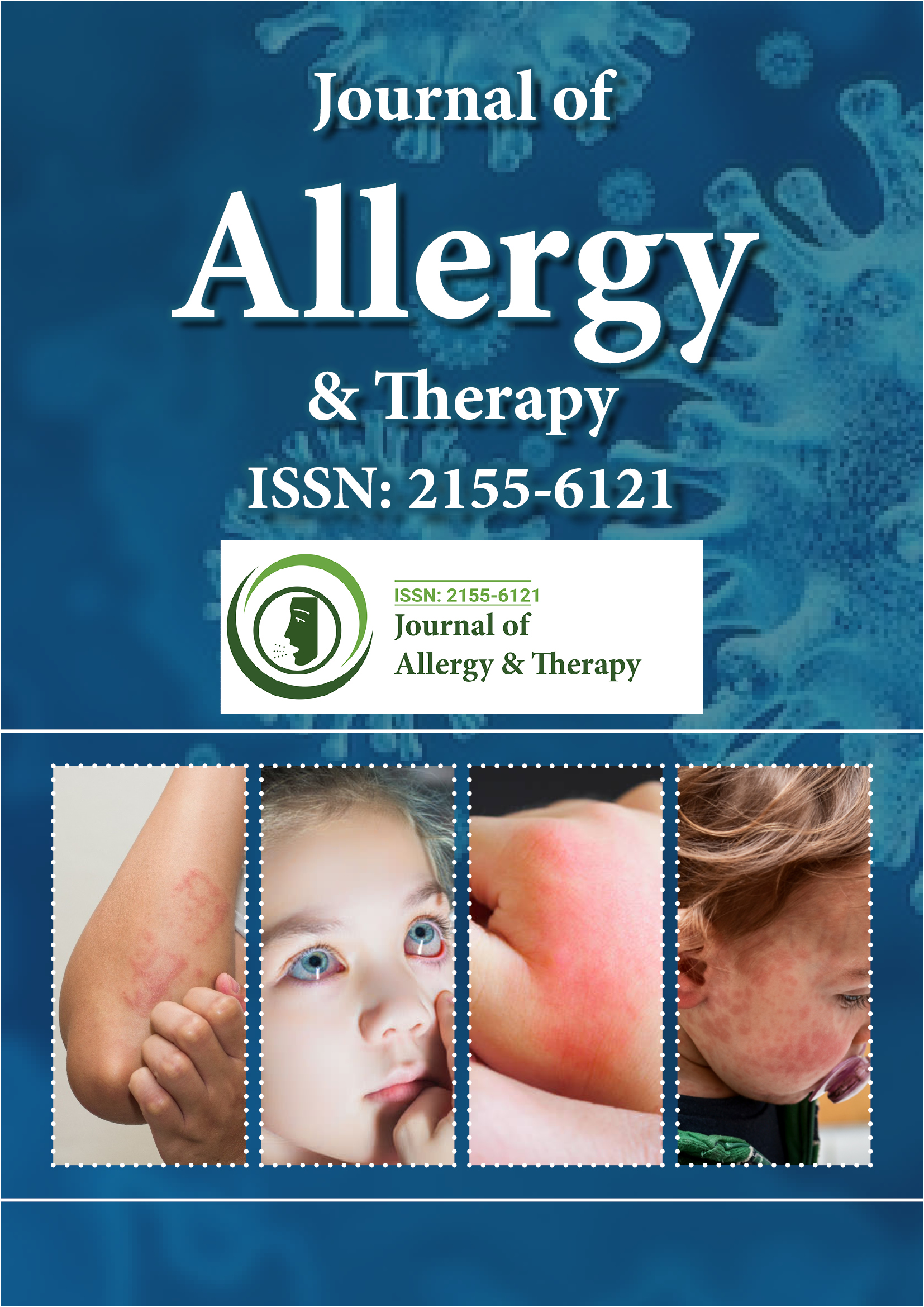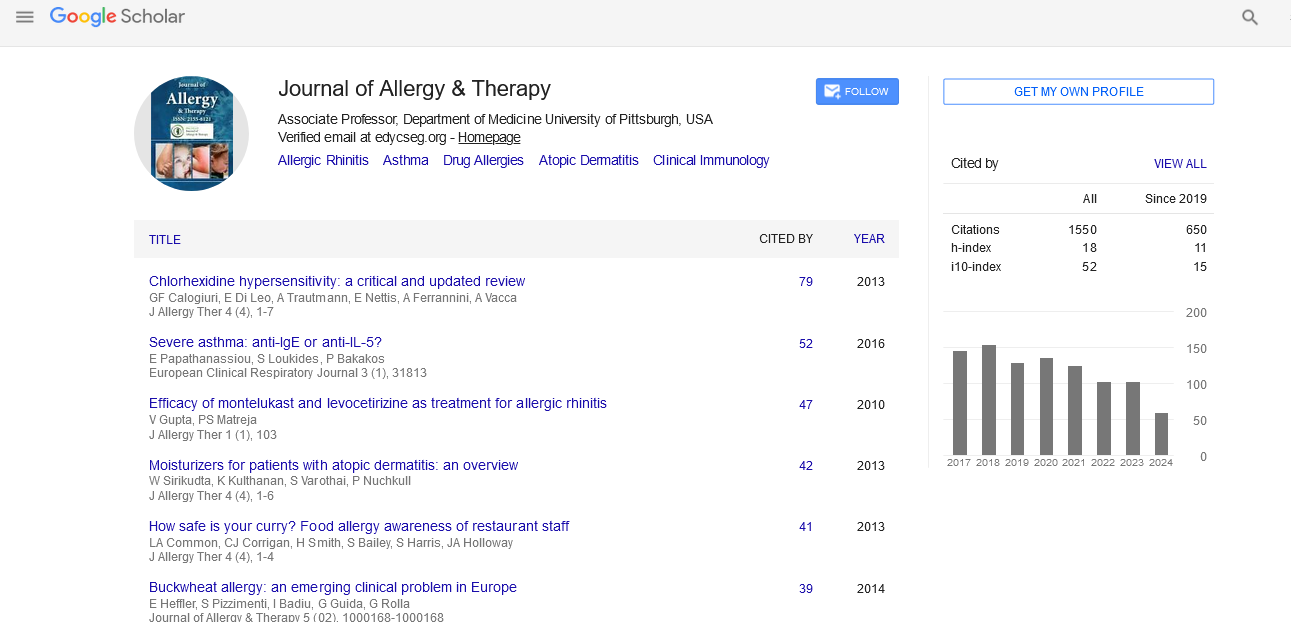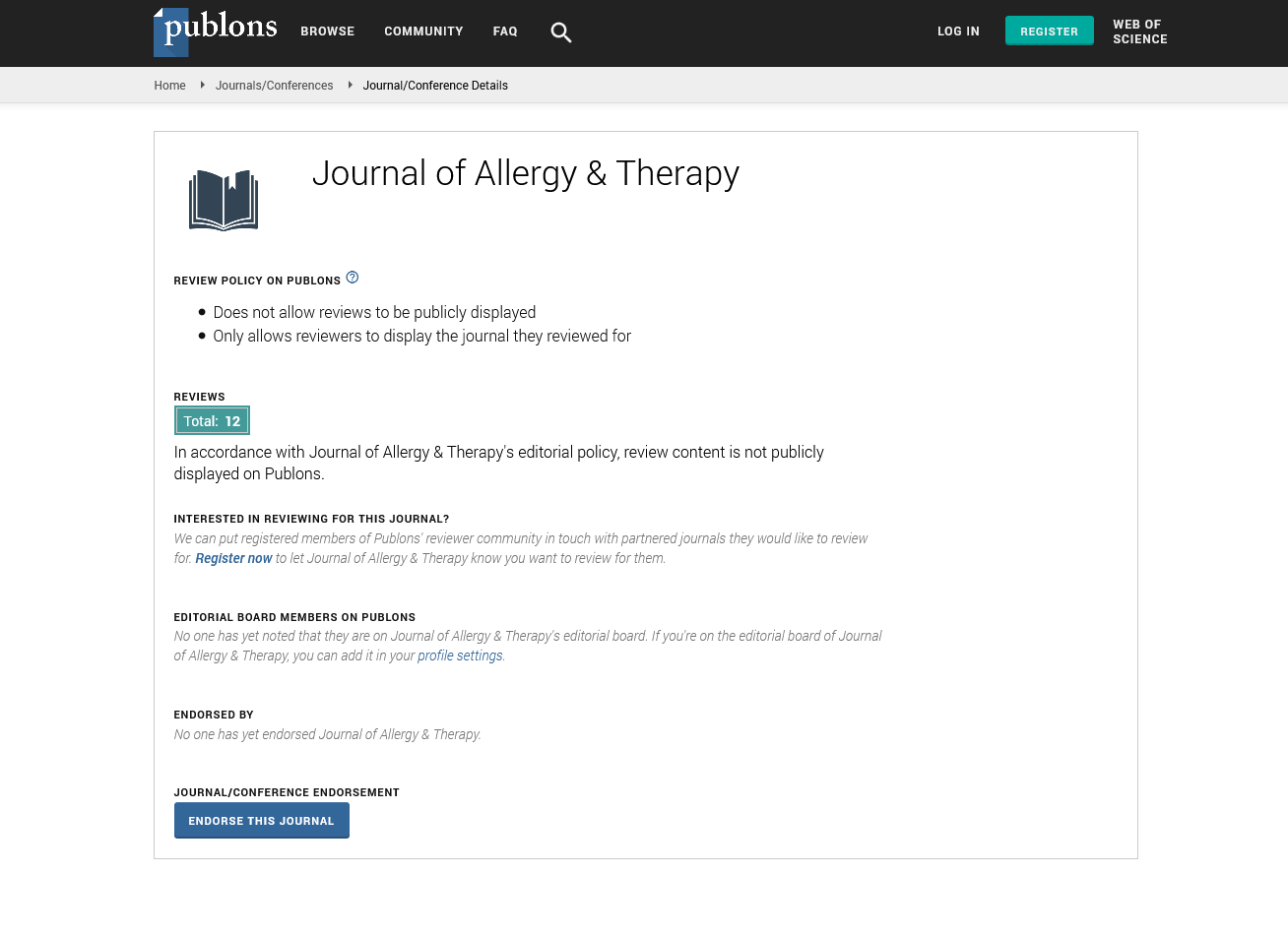Indexed In
- Academic Journals Database
- Open J Gate
- Genamics JournalSeek
- Academic Keys
- JournalTOCs
- China National Knowledge Infrastructure (CNKI)
- Ulrich's Periodicals Directory
- Electronic Journals Library
- RefSeek
- Hamdard University
- EBSCO A-Z
- OCLC- WorldCat
- SWB online catalog
- Virtual Library of Biology (vifabio)
- Publons
- Geneva Foundation for Medical Education and Research
- Euro Pub
- Google Scholar
Useful Links
Share This Page
Journal Flyer

Open Access Journals
- Agri and Aquaculture
- Biochemistry
- Bioinformatics & Systems Biology
- Business & Management
- Chemistry
- Clinical Sciences
- Engineering
- Food & Nutrition
- General Science
- Genetics & Molecular Biology
- Immunology & Microbiology
- Medical Sciences
- Neuroscience & Psychology
- Nursing & Health Care
- Pharmaceutical Sciences
Opinion Article - (2022) Volume 13, Issue 3
Hypersensitivity and its Major Types of Responses
Wen-Menon*Received: 01-Mar-2022, Manuscript No. JAT-22-16196; Editor assigned: 04-Mar-2022, Pre QC No. JAT-22-16196 (PQ); Reviewed: 18-Mar-2022, QC No. JAT-22-16196; Revised: 25-Mar-2022, Manuscript No. JAT-22-16196 (R); Published: 04-Apr-2022, DOI: 10.35248/ 2155-6121.22.13.274
Description
Hypersensitivity is a set of undesirable responses produced by the normal vulnerable system. Immunological responses involving IgG antibodies or specific T cells can also cause adverse acuity responses. The vulnerable system is an integral part of human protection against complaint, but the typically defensive vulnerable mechanisms can occasionally cause mischievous responses in the host. Similar responses are known as hypersensitivity responses. Asthma is generally connected to antipathetic response or other forms of hypersensitivity.
Hypersensitivity responses are inflated or unhappy immunologic responses being in response to an antigen or allergen. Type I, II and III acuity responses are known as immediate acuity responses because they do within 24 hours of exposure to the antigen or allergen. Immediate hypersensitivity responses are generally intermediated by IgE, IgM, and IgG antibodies. This exertion describes the pathophysiology of the immediate hypersensitivity responses, reviews their evaluation and operation.
Type I or anaphylactic response
The anaphylactic response is intermediated by IgE antibodies that are produced by the vulnerable system in response to environmental proteins (allergens) similar as pollens, beast danders, or dust diminutives. These antibodies (IgE) bind to mast cells and basophils, which contain histamine grains that are released in the response and beget inflammation. Type I hypersensitivity responses can be seen in bronchial asthma, antipathetic rhinitis, antipathetic dermatitis, food mislike, antipathetic conjunctivitis, and anaphylactic shock.
ITP is an autoimmune complaint that occurs at any age. Phagocytes destroy acclimatized platelets in the supplemental blood. Clinically, it manifests as thrombocytopenia with docked platelet survival and increased gist megakaryocytes. Unforeseen onset and bleeding from the epoxies, nose, bowel, and urinary tract occurs.
Type II or cytotoxic-mediated response
IgG and IgM intervene cytotoxic-mediated responses against cell face and extracellular matrix proteins. The immunoglobulin’s involved in this type of response damage cells by cranking the complement system or by phagocytosis. Type II acuity responses can be seen in vulnerable thrombocytopenia, autoimmune haemolytic anemia, and autoimmune neutropenia.
Serum sickness can be convinced with massive injections of a foreign antigen. Circulating vulnerable complexes insinuate the blood vessel walls and tissues, causing an increased vascular permeability and leading to seditious processes similar as vasculitis and arthritis.
Type III or immunocomplex responses
These are also intermediated by IgM and IgG antibodies that reply with answerable antigens forming antigen-antibody complexes. The complement system becomes activated and releases chemotactic agents that attract neutrophils and beget inflammation and towel damage as seen in vasculitis and glomerulonephritis. Type III acuity responses can classically be seen in serum sickness and arthus response.
The bracket of DHRs relies on the clinical donation of typical symptoms and their timing, and was firstly described by gell and coombs videlicet Type I, IgE intermediated responses, Type II, antibody intermediated cytotoxicity responses, Type III, vulnerable complex- intermediated responses, and Type IV, delayed acuity.
DHRs phenotypes may be classified as immediate or nonimmediate/belated responses. Immediate responses generally do within one hour after the last medicine administration and they're frequently caused by direct mast cell activation or IgE- intermediated acuity. Delayed responses do from 1 hours after medicine administration and may affect from antigen-specific IgG product, complement activation or a T- cell mediated response. Responses being between 1 and 6 hours after the last medicine input are called accelerate and can be caused both by an IgE- intermediated and T-lymphocyte mediated response. There's an imbrication between accelerate and delayed responses.
Citation: Menon W (2022) Hypersensitivity and its Major Types of Responses. J Allergy Ther.13:274
Copyright: © 2022 Menon W. This is an open access article distributed under the terms of the Creative Commons Attribution License, which permits unrestricted use, distribution, and reproduction in any medium, provided the original author and source are credited.


